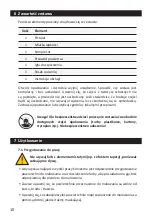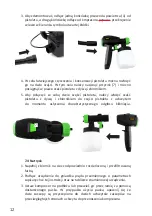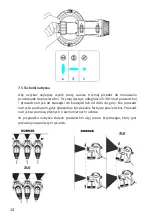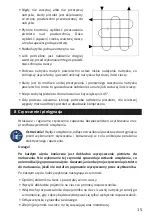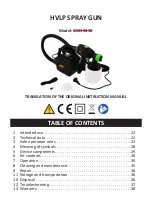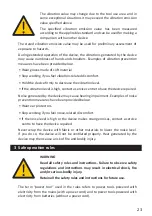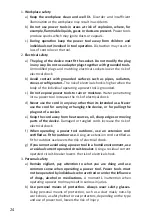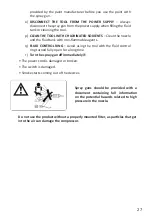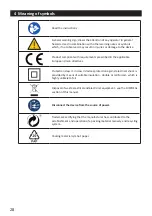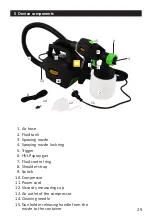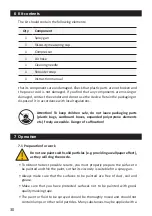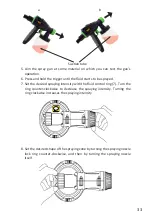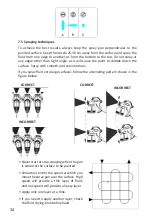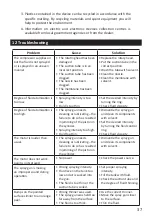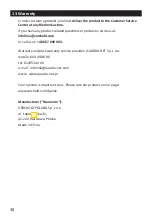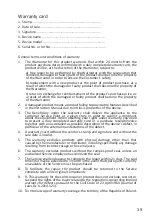
24
1 .
Workplace safety
a)
Keep the workplace clean and well lit.
Disorder and insufficient
illumination at the workplace may result in accidents.
b)
Do not use power tools in areas at risk of explosion, where, for
example, flammable liquids, gases or dusts are present.
Power tools
produce sparks which may ignite dusts or vapours .
c)
During operation keep the power tool away from children and
individuals not involved in tool operation.
Distraction may result in
loss of control over the tool .
2 .
Electrical safety
a)
The plug of the device must fit the socket. Do not modify the plug
in any way. Do not use adapter plugs together with grounded tools.
Unmodified plugs and matching electrical sockets lower the risk of
electrical shock .
b)
Avoid contact with grounded surfaces such as pipes, radiators,
stoves or refrigerators.
The risk of electrical shock is higher when the
body of the individual operating a power tool is grounded.
c)
Do not expose power tools to rain or moisture.
Water penetrating
into a power tool increases the risk of electrical shock .
d)
Never use the cord in any way other than its intended use. Never
use the cord for carrying or hanging the device, or for pulling the
plug out of a socket.
e)
Keep the cord away from heat sources, oil, sharp edges or moving
parts of the device.
Damaged or tangled cords increase the risk of
electrical shock .
f)
When operating a power tool outdoors, use an extension cord
certified as fit for outdoor use.
Using an extension cord certified as
fit for outdoor use lowers the risk of electrical shock.
g)
If you cannot avoid using a power tool in a humid environment, use
a residual current operated circuit-breaker.
Using a residual current
operated circuit-breaker lowers the risk of electrical shock .
3 .
Personal safety
a)
Remain vigilant, pay attention to what you are doing and use
common sense when operating a power tool. Power tools must
not be operated by individuals who are tired or under the influence
of drugs, alcohol or medications.
A moment’s inattention when
operating a power tool may result in serious injuries.
b)
Use personal means of protection. Always wear safety glasses.
Using personal means of protection, such as a dust mask, non-slip
work shoes, a safety helmet or ear protectors, depending on the type
and use of power tool, lowers the risk of injury.
Содержание SG0158-18
Страница 20: ...20 14 Deklaracja zgodno ci...
Страница 40: ...40...

